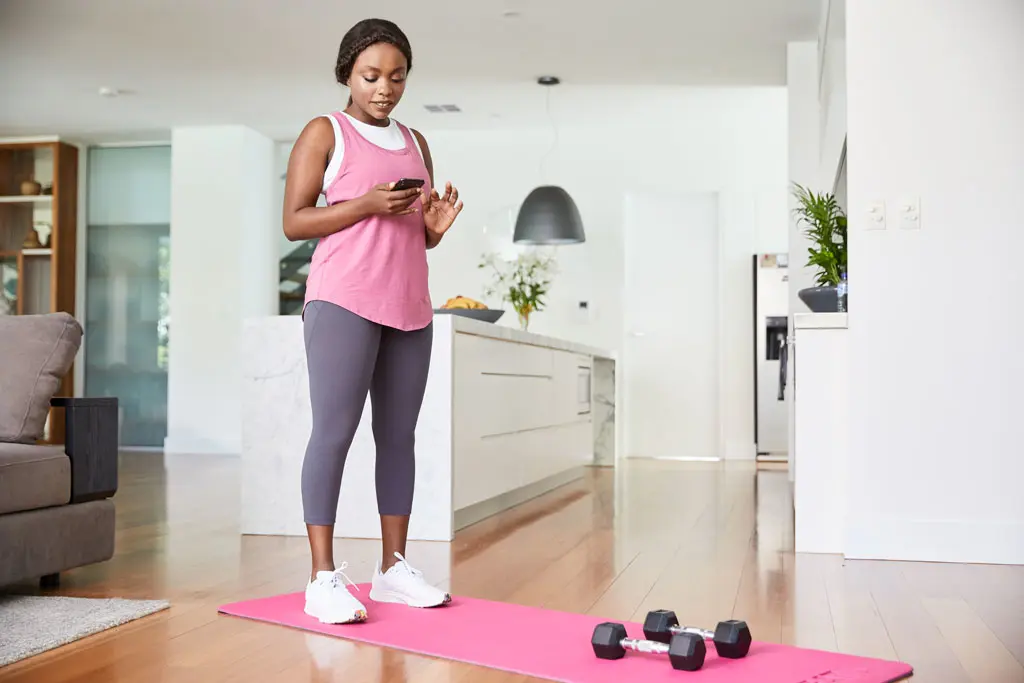How To Set Fitness Goals

November 15, 2019

Setting fitness goals for the first time can be overwhelming, but if you get goal setting right it can help power your progress towards creating and maintaining healthy habits.
The key to setting fitness goals is taking a step-by-step approach — the tips in this article will help you better understand fitness goals, how to create goals that will work for you, how to approach your goals, and how to achieve them.
What is a fitness goal?
A fitness goal is a specific training objective or physical challenge you set for yourself.
Your goal should be realistic and achievable within a particular time frame, and specific to your exercise routine or training habits.
You can also use the "SMART" acronym to help guide you. A SMART fitness goal is one that is specific, measurable, achievable, relevant and timely.
Remember, it’s YOUR goal
While there’s nothing wrong with being inspired by trainers, exercise trends or the fitness community, no one should dictate your fitness goal except you.
Only you know where you’re at, the circumstances you’re facing, and what your body is capable of achieving.
If you are inspired by those around you, ensure the influence is healthy and supports your goals — and keep in mind that what might work to motivate someone else may not be right for you.
Why you should set fitness goals
Setting fitness goals has many benefits. They allow you to exercise discipline, focus, and determination — all of which can be used in different areas of your life.
Having clearly defined fitness goals helps keep you on track and gives you something to work towards — not to mention the feeling of accomplishment when you achieve them!

What styles of fitness goals are there?
Goals can be based around different areas of fitness including routine, commitment, strength, a setback or workout plateau, flexibility, or cardio, to name a few.
All of these areas can be targeted using the Sweat programs. For example:
If you have a busy lifestyle but still want to make exercise a habit, try Kayla Itsines’ popular 28-minute workouts in her High Intensity with Kayla program — there’s a zero equipment version too!
If your goal is to build full-body strength, try Bodyweight Strength with Anissia Hughes, Kelsey Wells’ PWR programs, Low Impact Strength with Kelsey or High Intensity Strength with Kayla.
If you want to build targeted strength, try Kelsey’s Strong Glutes Challenge or Ab Burn Challenge with Kayla.
If you’re facing a workout plateau, you can find your fitness motivation with Chontel Duncan’s variety-driven FIERCE programs, Low Impact HIIT with Samantha Ortiz-Young, HIIT with Samantha or Strength & Cardio with Marilyn Rodriguez.
If you have a baseline of fitness and want to build your strength, speed and skill in key lifts, try Cass Olholm’s High Intensity Strength at Home or High Intensity Strength programs.
If you’re ready to level up and lift heavier weights, try LIFTING at Home, Strength & Resistance or BUILD.
If your goal is to increase your strength, coordination and control, try Britany Williams’ Barre with Britany or High Intensity Barre with Britany programs.
If flexibility is your goal, try Yoga with Phyllicia Bonanno, Yoga with Ania Tippkemper or Sjana Elise’s BAM program.
If you want to build core strength and create a greater connection between your mind and movement, try Sara Colquhoun’s Pilates or Core & Body Connection Challenge programs.
If you want to improve your fitness, try Kayla’s Low Impact, Energy Boost Challenge or HIIT Cardio & Abs programs, Full Body HIIT with Chontel, Body Burn Challenge with Cass, or Monica’s HIIT and Boxing Fit Challenge programs.
When should you set fitness goals?
While it’s popular to set fitness goals at the start of a new year, month or season, you can start your fitness journey or set fitness goals at any time — the perfect time is now!

How long should a fitness goal take to complete?
The time it takes to reach a fitness goal is something only you can determine. Whether your goal focuses on the immediate, short or long-term future — or all three — it’s best to set a goal that is achievable for you.
This might depend on a number of factors, but overall it should be realistic for you.
You can always set an immediate goal to tackle now, then set short-term and long-term goals at a later date. Alternatively, you can break a bigger goal down into smaller goals.
You might even like to align your fitness goals with the duration of one of the Sweat programs.
What are immediate fitness goals?
Immediate goals are what you want to achieve today, this week or in the next fortnight.
If you want to start moving your body again after taking a break from exercise, your goal might be to set aside time for activity every day, complete every session of your Sweat program workout, or drink more water.
If you're getting ready to exercise again after falling ill, your goal might be to prepare your body to get moving again by practicing some breathing exercises or going for a gentle walk.
These goals might seem straightforward, but they can still represent a significant change and a big commitment to your health and fitness.
What are short-term fitness goals?
Short-term goals typically span up to 12 weeks.
An example of a short-term goal might be to complete every workout for the first 12 weeks of a new fitness program or achieve a higher number of reps during Chontel’s FIERCE AMRAP sessions.
What are long-term fitness goals?
Long-term goals typically take 6–12 months to achieve.
You might aim to complete High Intensity with Kayla, then move on to High Intensity Strength with Kayla or alternatively, your goal might be to complete Kelsey's entire PWR program.
If you’re completing the BUILD program, you might challenge yourself to lift a heavier weight.

What next?
Now it’s time to set your goals — whether they’re immediate, short or long-term goals, set goals that are true and authentic to you.
Check-in with your fitness goals
It can be helpful to check in with your goals to see how you’re progressing.
This will help to confirm whether you’re on your way to achieving your goal or it might highlight where you need to make some changes to get back on track.
What if you don’t reach your fitness goal?
If you don’t reach your goal, don’t be disheartened. Take a moment to re-evaluate your situation and set another goal to work towards. Ensure your new goal matches your current environment and circumstances.
Above all, consider it an opportunity to learn and grow from — there can be valuable lessons in setbacks and you can bounce back feeling more empowered than ever!
Set your fitness goals now!
When it comes to creating fitness goals, there is no time like the present.
Take advantage of the times you have a lot of motivation and can commit to realistic goals — achieving each goal will help you to sustain a healthy lifestyle over time. And if you need more guidance with goal setting, try considering these five main focus areas.
Don’t forget to take the time to recognise achieving your goals — reaching a fitness goal is something you should feel extremely proud of!

A more empowered you starts with Sweat, and our editorial team is here to bring you the latest fitness tips, trainer recommendations, wellbeing news, nutritional advice, nourishing recipes and free workouts.
* Disclaimer: This blog post is not intended to replace the advice of a medical professional. The above information should not be used to diagnose, treat, or prevent any disease or medical condition. Please consult your doctor before making any changes to your diet, sleep methods, daily activity, or fitness routine. Sweat assumes no responsibility for any personal injury or damage sustained by any recommendations, opinions, or advice given in this article.
Wellbeing